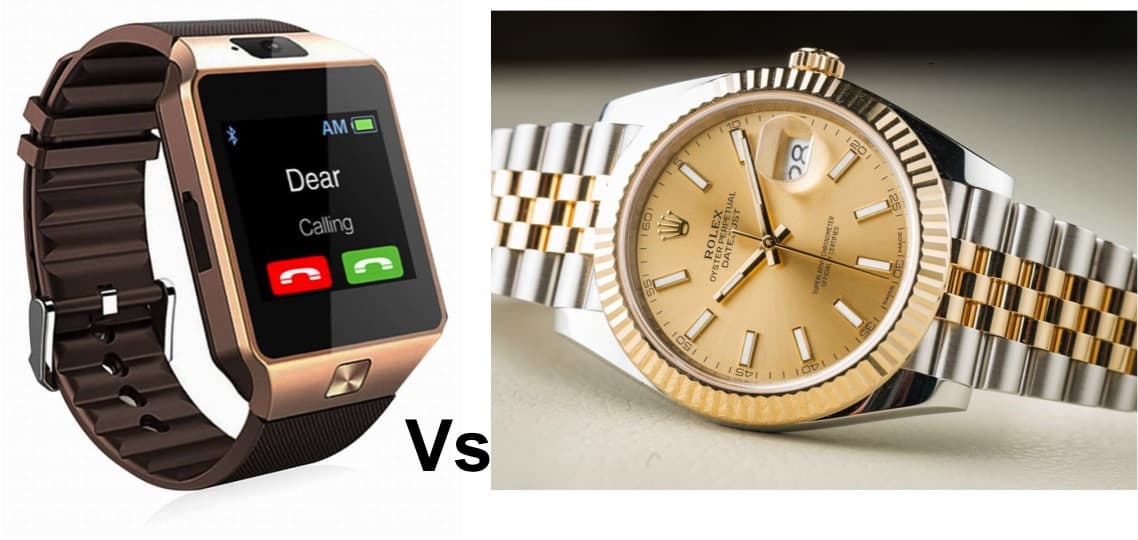Will Smartwatches Overshadow The Traditional Mechanical Watch?
Towards the end of the 20th century technology started to develop at an astronomical rate. Mobile phones became smaller, there was renewed interest in electric vehicles and the World Wide Web became publicly accessible. And since then, the tech industry has had no intention of slowing down.
Nowadays the current craze is ‘smartwatches’; tiny gadget’s that perform some pretty useful functions, from the mandatory time telling and date indication, to the more advanced GPS location services and Bluetooth and Wifi connecting features (some even record your sleep patterns and tell you to move when you’ve been stationary for a long period of time, something I find quite freaky!).
But with the introduction of so many new hi-tech watches, I can’t help but wonder whether they will ever replace the classic luxury wristwatch?

Style
For centuries the traditional wrist watch has been a symbol of class, style and wealth, a quality that remains unchanged even today. Although some luxury pieces feature hi-tech materials and complication functions (Richard Mille), the traditional gold or steel mechanical watch continues to be a desirable piece for watch collectors and one off purchasers. For example, the Patek Philippe 5711/r and Rolex Day-Date II 218235, are both extremely stylish timepieces that can be worn during the day and also compliments eveningwear perfectly. Both models will certainly never become obsolete unlike the technology of today’s smart watches, which even in just five years time will be outdated.

Investment
Purchasing a luxury watch is probably one of (if not) the safest way to invest your hard earned money. You have more control over your investment because, in essence, you can predict which models are more likely to increase in value due to limited edition status or popular demand (taking into account those luxury watch brands with a rich heritage like Patek Philippe and Rolex). For example, Rolex Stainless Steel Submariners are currently one of the most lucrative watches to purchase as they are in high demand and have already started to increase in price.
The Rolex ‘Hulk’ Submariner had a retail price of £6600 however is now worth over £8500. That’s over a 20% rise in just 7 years. Although a watch investment isn’t lucrative in the short term, any sort of return that is guaranteed in the long run is better than losing money on the purchase of a smart watch. When you purchase a smart watch, you purchase the technology, so in a number of years, when technology has moved on, the only valuable part of the watch would be the casing material, and even that is worth little.

Charging
One major difference between the mechanical watch and the tech watch is the way they are powered. Luxury timepieces from the likes of Vacheron Constantin, Rolex and Audemars Piguet are either automatic or battery powered (with batteries lasting 3-5 years), where as smart watches require a USB charger, a major inconvenience if you were to forget to charge it overnight and are in a rush to leave the next day.
Now I am not trying to convince you NOT to purchase a smart watch because after all, it does offer functions that are extremely useful in today’s ‘health obsessed’ society. However, it is an irrefutable fact that smart watches will NEVER be able to overshadow or replace the highly reliable, charger free, stylish and timeless mechanical wristwatch. After all, society has admired and desired luxury watches for centuries and will continue to do so for many centuries to come.
Credit: (L) E-comfort D209 (C) Keaker KW18 (R) RJD A1 Apple
Fancying a new wristwatch? Check out our newest arrivals here.
